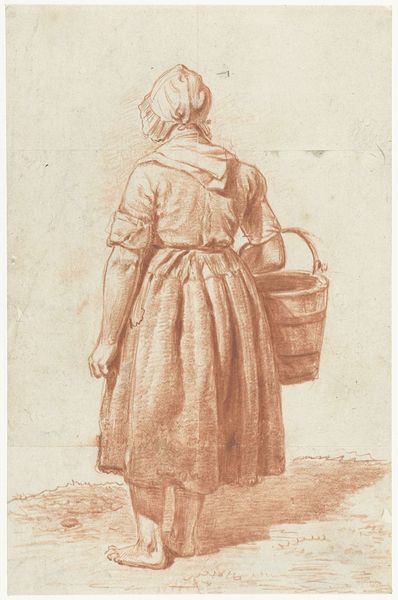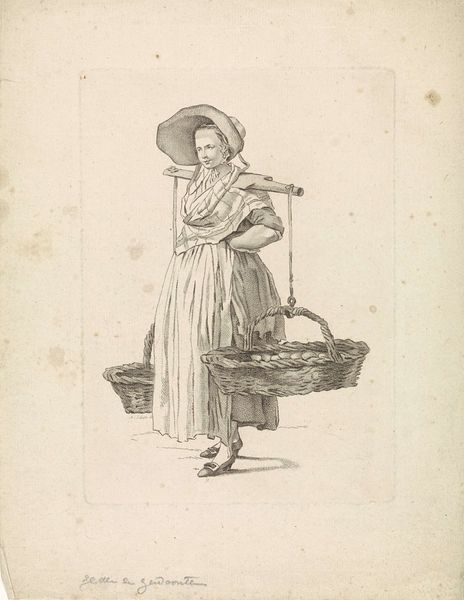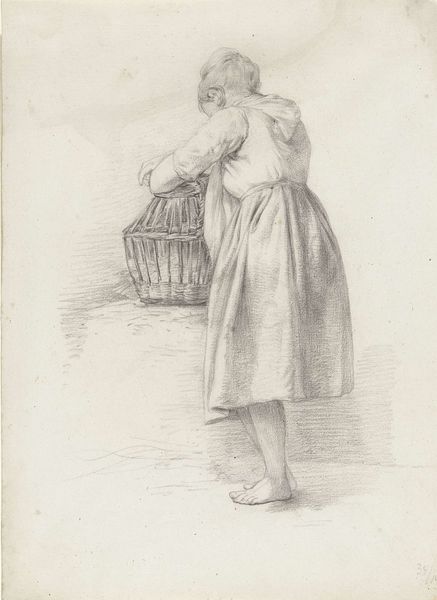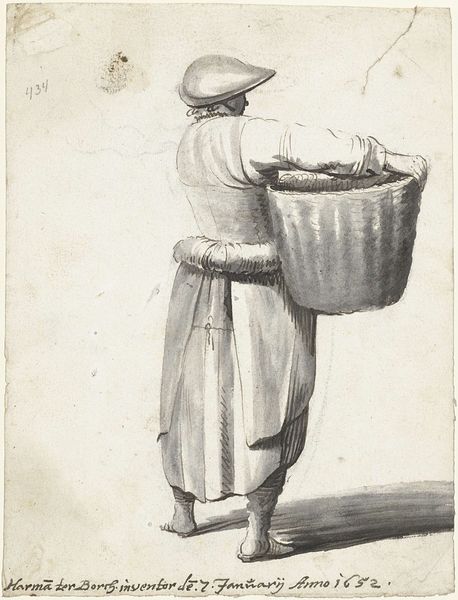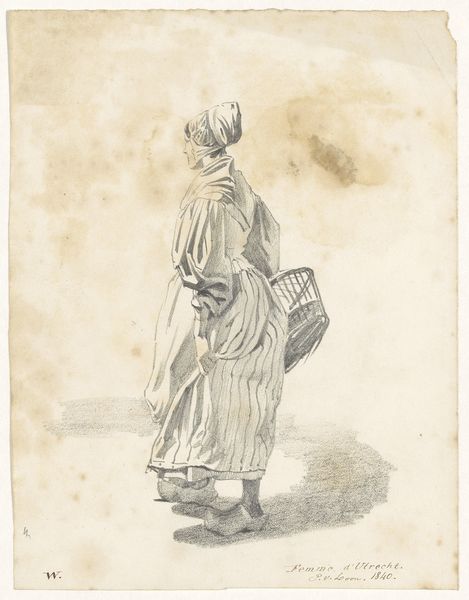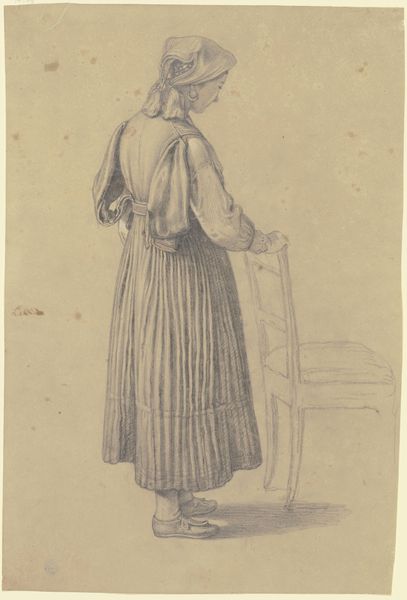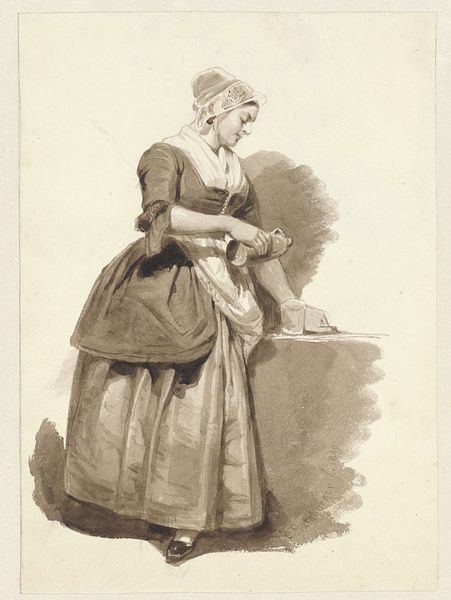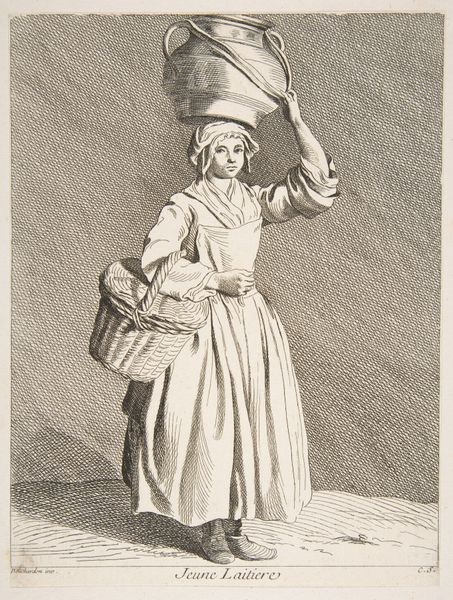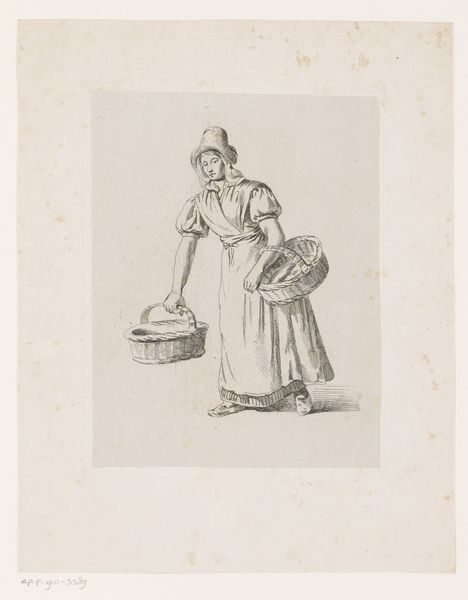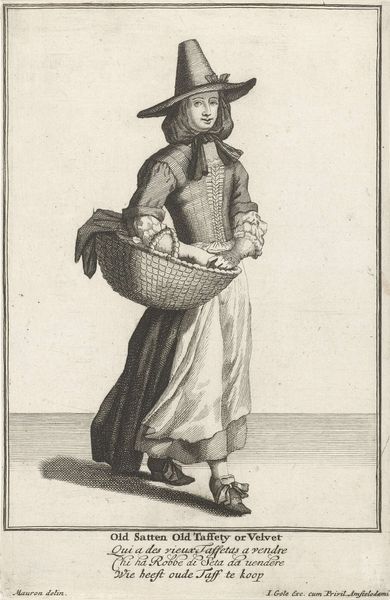
Vrouw op klompen met mand, driekwart van achteren gezien 1797 - 1838
0:00
0:00
johanneschristiaanschotel
Rijksmuseum
drawing, pencil
#
portrait
#
pencil drawn
#
drawing
#
pencil sketch
#
charcoal drawing
#
figuration
#
pencil drawing
#
romanticism
#
pencil
#
pencil work
#
genre-painting
#
realism
Dimensions: height 233 mm, width 129 mm
Copyright: Rijks Museum: Open Domain
Editor: Here we have "Woman in Clogs with Basket, Three-Quarter View from the Back," created by Johannes Christiaan Schotel sometime between 1797 and 1838. It’s a pencil drawing held at the Rijksmuseum. It has a quiet, unassuming quality. What compositional elements stand out to you? Curator: The work’s visual interest lies primarily in Schotel’s effective use of light and shadow. Observe how the subtle gradations of tone, achieved through delicate pencil work, define the form of the woman and her attire. The basket, for instance, showcases a remarkable control of line and texture to render a woven object. Editor: It's amazing how much detail he gets with just a pencil. Do you think there's any symbolism here? Curator: Symbolism is a tempting avenue, but from a formalist perspective, consider the relationship between line and form. Does the somewhat rough and ready feel contribute to the work's authenticity? The precision of the drawing gives it integrity. It presents the ordinary and offers aesthetic beauty in everyday life, celebrating the compositional and textural elements. Editor: That makes sense. So it's less about what the woman *represents* and more about how Schotel *presents* her through the interplay of light, shadow, and texture? Curator: Precisely. Notice how Schotel captures texture and depth in the folds of her dress, juxtaposed with the smoother surface of her bodice. The negative space around her, carefully considered, further accentuates the subject’s form and presence. Editor: This has made me rethink how I see drawings. Thanks for helping me move beyond looking *at* a drawing, and to see it and experience its formal elements! Curator: Indeed. Hopefully you will contemplate more artworks as complete aesthetic statements and see the intention within their formal constructs.
Comments
No comments
Be the first to comment and join the conversation on the ultimate creative platform.
